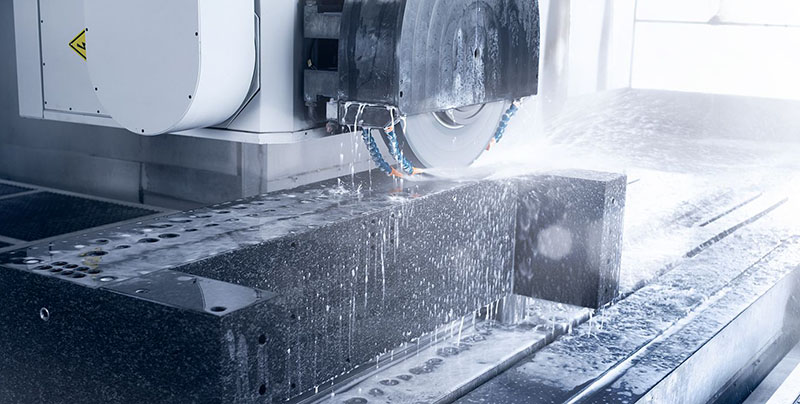Stainless steel is one of the most widely used materials in industries that require high strength, corrosion resistance, and aesthetic appeal. Grinding is a crucial process in the fabrication and finishing of stainless steel components. It involves the use of abrasive tools to remove material from the surface, refine the shape, and improve the surface finish of stainless steel parts. In this post, we’ll delve into what stainless steel grinding entails, the grinding process, its advantages, and its common applications.
What is Stainless Steel Grinding?
Stainless steel grinding refers to the process of using abrasive tools to shape, smooth, and finish stainless steel surfaces. The goal is to achieve specific tolerances, dimensions, and surface finishes required for various applications. Grinding can be used for removing excess material from welds, refining rough edges, and achieving high precision on intricate components.
The Grinding Process for Stainless Steel
The grinding process for stainless steel typically involves the following steps:
Selection of Abrasive Material:
The choice of abrasive material is critical when grinding stainless steel. Common abrasives used include alumina, zirconia alumina, and ceramic alumina. These materials are chosen for their hardness and durability, allowing them to effectively grind stainless steel without excessive wear.
Tool Selection:
Grinding is a demanding and complex process that must be carried out using appropriate tools. Depending on the purpose of processing and the specific nature of the work, angle, oscillating, eccentric, belt or delta grinders are used. The selection of the appropriate solution depends largely on the size of the surface to be treated. The use of the right abrasive material is also important. In the case of stainless steel, it must not contain sulfur, chlorine or iron. For this reason, the optimal solution is to use synthetic abrasive materials that are free of particles that increase the risk of intergranular corrosion.

Preparation:
Before grinding, it’s essential to prepare the stainless steel surface by cleaning it to remove any dirt, oil, or contaminants that could affect the grinding quality.
Grinding:
The grinding process itself involves applying the abrasive tool to the stainless steel surface with controlled speed and pressure. The key is to maintain a steady hand and consistent pressure to avoid overheating or work hardening the material.
Cooling:
To prevent excessive heat buildup, which can cause discoloration or distortion, coolants or lubricants are often used. These coolants help to dissipate heat, reduce friction, and prolong the life of the grinding tool.
Inspection:
After grinding, the surface is inspected to ensure that it meets the required specifications. This may include checking the dimensions, tolerances, and surface finish.
Advantages of Stainless Steel Grinding
Improved Surface Finish: Grinding can achieve a smooth, polished surface that meets specific aesthetic and functional requirements. This is especially important for stainless steel components used in visible or decorative applications.
Precision and Accuracy:
Grinding allows for precise material removal and can achieve tight tolerances that are essential in many industrial applications.
Enhanced Corrosion Resistance:
Proper grinding and finishing can remove surface imperfections that could otherwise harbor contaminants, thus improving the overall corrosion resistance of the stainless steel part.
Versatility:
Grinding can be used for a variety of purposes including weld removal, edge rounding, and surface conditioning. It is adaptable to both simple and complex geometries.
Increased Durability:
By removing surface defects and achieving the desired surface condition, grinding can enhance the mechanical properties and durability of stainless steel components.
Common Applications of Stainless Steel Grinding
Weld Preparation and Cleanup:
Grinding is commonly used to clean up weld seams, remove spatter, and prepare surfaces for further finishing or coating.
Surface Polishing:
Stainless steel grinding is often used to polish surfaces to a high gloss or mirror finish, which is particularly desirable in industries like food and beverage, pharmaceuticals, and architectural applications.
Deburring:
Grinding removes sharp edges and burrs from machined parts, making them safer to handle and improving their fit and function in assemblies.
Edge Rounding:
Rounding the edges of stainless steel parts through grinding helps to prevent injury and improve the performance of the part, particularly in dynamic applications where smooth transitions are critical.
Shaping and Resizing:
Grinding can be used to reshape or resize stainless steel components to precise specifications, making it a valuable process in custom fabrication and repair.
Conclusion
Stainless steel grinding is an essential process in the manufacturing and finishing of stainless steel components. By selecting the appropriate abrasive materials and grinding tools, and by carefully managing the grinding parameters, manufacturers can achieve high-quality finishes, precise dimensions, and improved durability. Whether for weld cleanup, surface polishing, or custom shaping, stainless steel grinding plays a vital role in ensuring that stainless steel components meet the rigorous demands of various industries.



